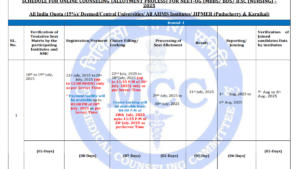Anti Defection Law
In many democracies, politicians leave their parties. They might potentially threaten the stability of the cabinet, which depends on the backing of elected lawmakers. The logical conclusion is that such instability could amount to a betrayal of the will of the people as expressed in the most recent election. That is why Anti defection law came into existence.
Anti Defection Law in India Background
Some contend that political defections that take place in between elections weaken the people’s stated will and, therefore, the assertive act of elections in a democratic country. Even before India gained its independence, there were frequently defections[citation needed]. As coalition politics gained traction starting around 1960, more elected officials defected as they competed for positions in the cabinet of ministers. (It should be noted that a government minister is not required to be a member of either House of Parliament in many nations, including the UK.) For instance, in 1967, a lawmaker named Gaya Lal switched sides three times in a single day.
The Congress (I) party became the lone winner of defections between 1957 and 1967. While individuals who left other parties and did not then join Congress (I) founded separate new parties with the intention of influencing administration in the future through coalition government, rather than supporting incumbent administration, it lost 98 of its legislators while gaining 419. This circumstance gave Congress (I) a strong grip on administrative power. Around 3,500 people were elected to the legislative bodies of several states and union territories in the 1967 elections; of these elected officials, some 550 later left their parent parties, and some lawmakers did so more than once.
Introduction of Anti Defection Law in India
A committee headed by Y. B. Chavan was established during the 1967 fourth Lok Sabha to address the issue of political party desertion. A report from this committee in 1968 resulted in the first attempt to introduce a measure in Parliament to prevent defections. The government, then led by Indira Gandhi, referred the measure for review by a Joint Select Committee despite the opposition’s support. It did not come out of committee before all other legislative plans were thrown out by later elections.
- One of the pivotal eras in Indian politics was from 1977 to 1979, when Morarji Desai’s first national non-Congress cabinet was overthrown as a result of 76 legislators defecting.
- Political unrest resulted from this till Gandhi was elected with a resounding majority in 1979.
- The political climate of India between 1970 and 1980 showed a clear trend. Every time there was a central administration led by the Congress, non-Congress elected officials defected, which contributed to the collapse of the regional administrations.
- Virendra Patil, the then-chief minister of Karnataka, referred to this pattern as a “goldrush.”
- Despite the fact that corruption was a worldwide problem, India’s disruptive politics of defection began to spread during the Gandhi era.
Anti Defection Law in India
- Before the anti-defection law was passed, there had been instances of apparent confusion brought on by legislators switching their party allegiance during the election of the Prime Minister and Chief Ministers of certain of its states and territories.
- It should be emphasised that at the time, the term “political party” was not recognized in the Indian Constitution.
- According to one estimate, over half of the 4,000 lawmakers elected to the central and federal parliaments in the general elections of 1967 and 1971 later deserted, causing political unrest in the nation.
- In India, a law was sought to restrict these defections.
- To accomplish this, the Indian Parliament passed the Tenth Schedule of the 52nd amendment to the Indian Constitution in 1985, which led in the addition of the new word “Political Party” to the Indian Constitution. As a result, the Constitution now recognises political parties.
The Parliament of India passed the ninety-first amendment to the Indian Constitution in 2003 as a result of proposals from numerous constitutional bodies. This improved the law by include clauses that would disqualify defectors and prevent them from being nominated as ministers for a while.
Deccan Plateau in India States, Location and Maps
Anti Defection Law Schedule
The Tenth Schedule of the Indian Constitution has eight provisions that make up the anti-defection law. Defection as a reason for disqualification. The legislation’s core is covered in this part, which outlines the grounds for expulsion from the State assembly or the Parliament. According to the law, a member is ineligible if they “voluntarily resign from such political party,” however according to paragraph 2.1(b) of the same law, a member is ineligible if they vote or abstain from voting in a vital election against the advice given by their political party.
What is the Capital of Arunachal Pradesh?
Anti Defection Law Amendments for UPSC exam
- In 2003, a proposal to change the Tenth Schedule was made in order to improve the effectiveness of the current law in addressing the frequent defections.
- The Constitution (Ninety-first Amendment) Bill was suggested by a committee led by Pranab Mukherjee, who noted that the exception afforded by allowing a split, granted in paragraph three of the Schedule, was being extensively exploited, leading to numerous divides in different political parties.
- The committee also noted that the allure of personal wealth contributed significantly to defections and led to political horsetrading.
- The Lok Sabha passed the law on December 16, 2003, in a single day, and the Rajya Sabha followed suit on December 18.
- The Constitution (Ninety-First Amendment) Act of 2003 was notified in the Indian Gazette on January 2, 2004, after receiving presidential approval on January 1, 2004.
A member disqualified for defection should not take a ministerial position or any other lucrative political position until the term of his office as a member expires, according to the modified act. The Tenth Schedule provisions enabling split-related defections were not included in the 2003 modified act. The modified act also mandated that the proportion of ministers in states and union territories to the total number of members in each house shall not be greater than 15%.









 NEET UG 2025 Counselling Dates OUT! Chec...
NEET UG 2025 Counselling Dates OUT! Chec...
 Dr MGR Medical University Results 2025 R...
Dr MGR Medical University Results 2025 R...
 GSEB HSC Science Supply Result 2025 Down...
GSEB HSC Science Supply Result 2025 Down...




